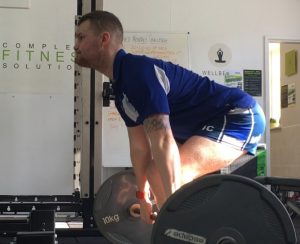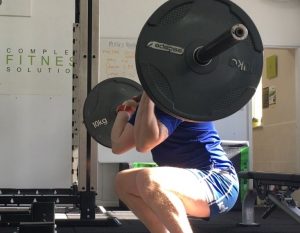Posted on May 07, 2018 by Jenny Cromack

Both working and training regularly in the gym environment, I see a range of exercise protocols and lifting approaches, some more wacky than others. Within a regular training session you will see a mixture of large compound movements (e.g. squats or deadlifts) and the smaller isolated exercises (e.g., bicep curls or pectoral flyes). Now every trainer has his or her own reasons for training, some of which will require some element of muscular isolation (e.g., bodybuilding), but I am a firm believer and fan of compound movements. My current regime only includes compound movements and I have steered away from isolated training for the time being. My typical week will have me squatting, deadlifting, cleaning, snatching, and push pressing a barbell around the gym. What this article looks to offer is to let you share in my love of compound movements by sharing the benefits these large taxing compound movements can have for our health and fitness goals.

What is the Difference Between Compound and Isolated Exercises?
A compound movement or exercise that involves more than one joint, for example the squat; requires movement at the hip, knee, and ankle. Using more than one joint means that compound movements will generally work more than one muscle group, such as the quadriceps, glutes, hamstrings, and calves (plus more) during a squat. Isolated movements tend to only require movement at one joint, for example a strict bicep curl only requires us to bend and straighten the elbow. By only moving one joint it means that we are only activating our elbow flexors, such as the biceps brachii, brachialis, and brachioradialis.
Why Should You Include Compound Movements In Your Routine?
There are several benefits to including compound movements into your workout routine which are as follows:
Boosted Metabolic Activity
- As mentioned, compound movements require multiple muscle groups to work together to produce a multi-joint movement against resistance. Using multiple muscle groups requires more blood flow and energy. These large movements will tend to result in a more elevated heart rate and energy usage than isolated movements. These effects will help us burn more calories and kick start an increase in metabolic activity.
Improved Muscular Balance
- Our body is designed to work in a balanced fashion with the larger muscles becoming prime movers for a given movement and the smaller muscles there to aid and facilitate. When we isolate, and often neglect some muscles, we run the risk of throwing this well-oiled machine off-balance. By performing multi-joint movements and using several muscle groups, we can ensure that these muscles are worked proportionally. You will all have seen people heavily devoted smashing their chest with flyes, pec machines, and the like, whose shoulders contort themselves forward leaving them open to all sorts of shoulder, back and neck issues. One way to prevent any over dominance of specific muscle groups is to work them together, and how better to do that than with compound exercises.
Improved Movement and Mechanical Efficiency
- The typical response on multiple muscle groups and the interrelated movements of multiple joints means compound movements often replicate more functional movements. For example, a squat looks a lot like sitting to standing or vice versa, a deadlift replicates a “picking up” movement. Training our muscles and joints in this way means we will be more efficient in co-ordinating multi-joint movements. In contrast, when training using more isolated exercises we can leave ourselves open to being more segmental in the way we move, which means that our mechanical efficiency when performing multi-joint movements such as running, jumping, sit-to-standing etc. will be reduced.
Encourage Better “Core” Strength
- Compound movements often place the body “free” in space and require a great deal of effort to maintain a stable and safe position. To maintain this position we must call upon our core muscles (e.g., abdominals and extensors). This large responsibility on the core means these muscles will be getting worked with every compound movement repetition. In contrast, isolated exercises often put us in fixed supported positions, such as a leg extension machine, where our body is supported by seats and back rests etc. This does not require us to engage our core anywhere near as much. So if you want to give your abs a double workout get cracking on with those squats and deads!
Increased Testosterone and Growth Hormone Release
- Recruiting more muscle fibres mean our bodies will respond by secreting more hormones, such as testosterone and growth hormone. These hormones play a vital role in muscle repair and stimulate muscle growth, fibre regeneration and adaptation to stimuli (e.g., resistance). Therefore, by including these large compound movements and stimulating several muscle groups will potentially help us conjure up higher levels of the bodies very own muscle building formula and achieve those increases in mass and strength we seek.
Hopefully the previous benefits provide some food for thought when considering you exercise selection in your program. I am by no means saying isolated exercises do not have their place within weight training. I am, however, saying that compound exercise are a valuable tool in the box for trainers looking to not only achieve their muscle and strength gains but also ensure we maintain a level of bodily balance and efficiency.

